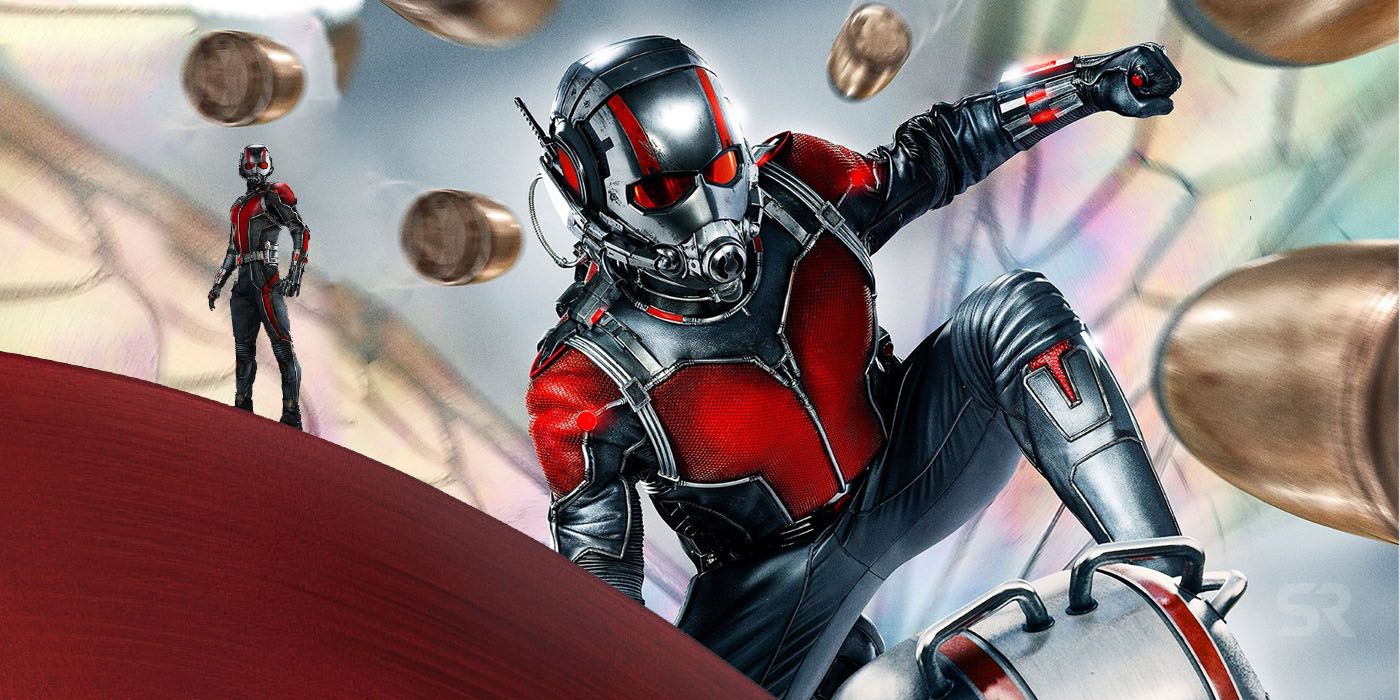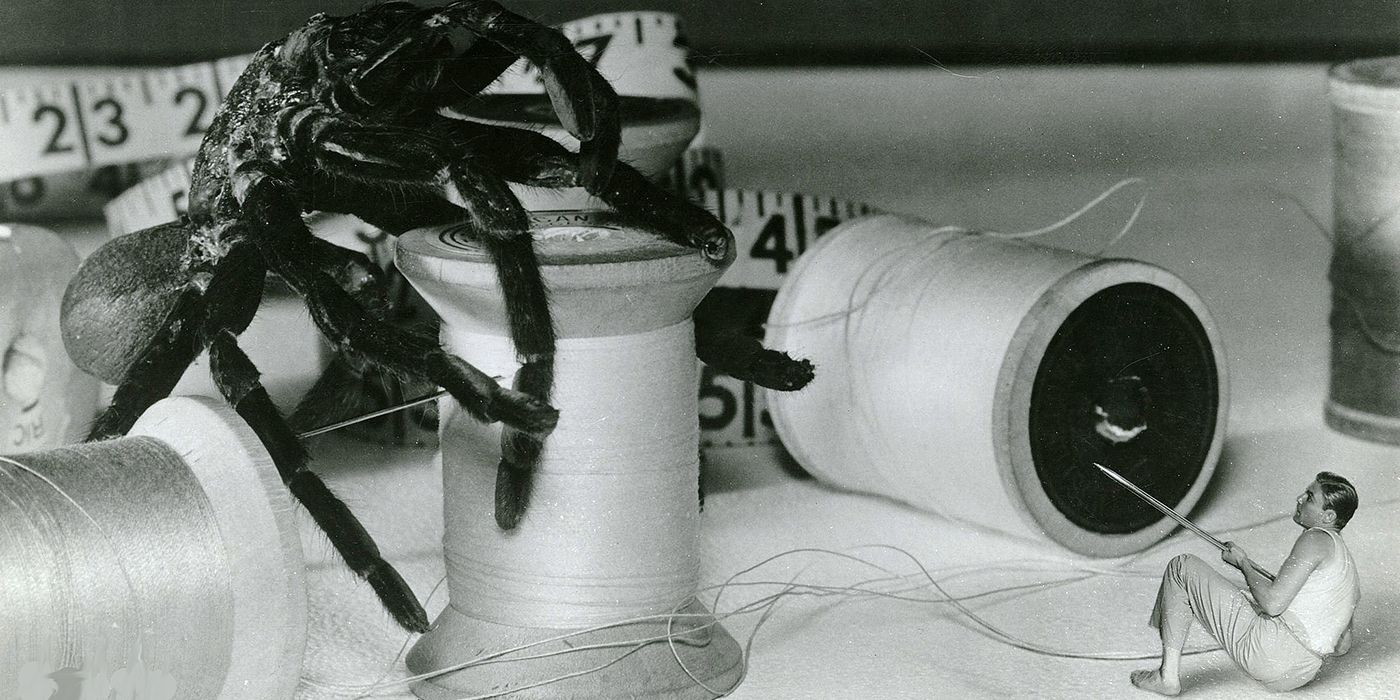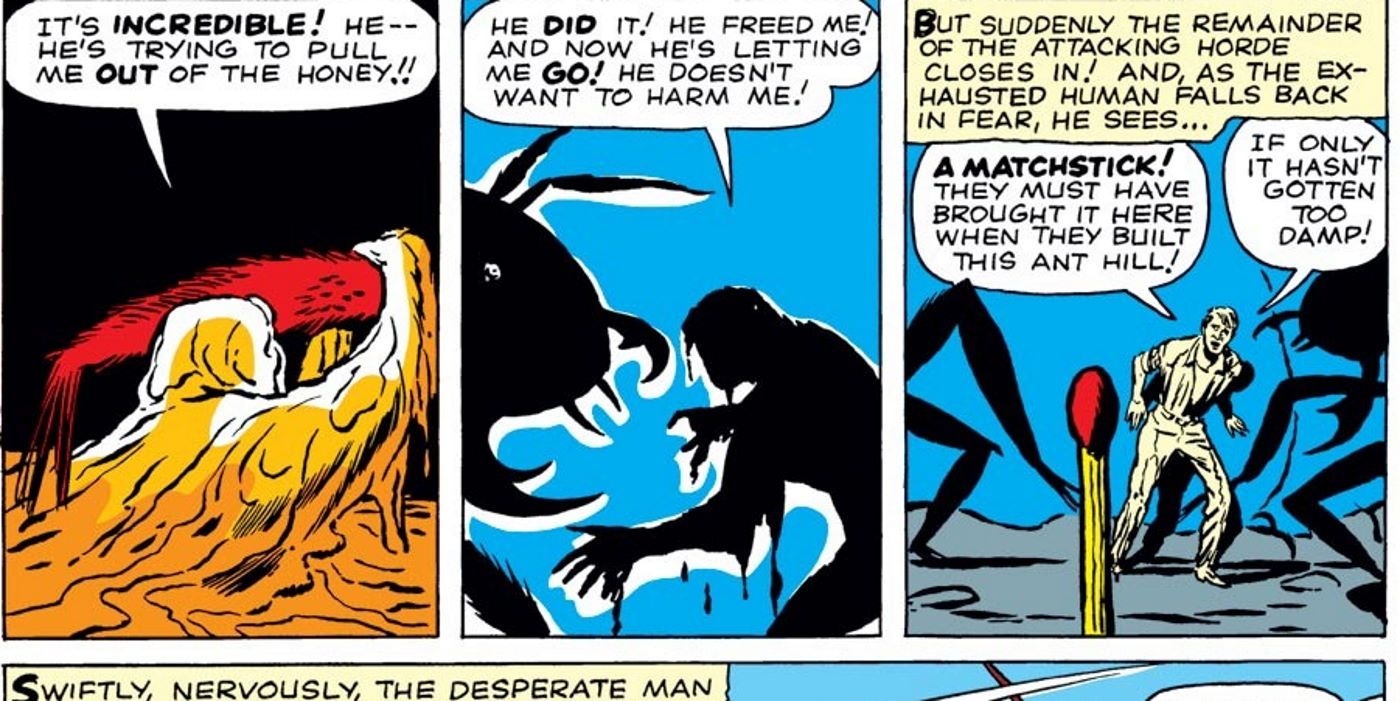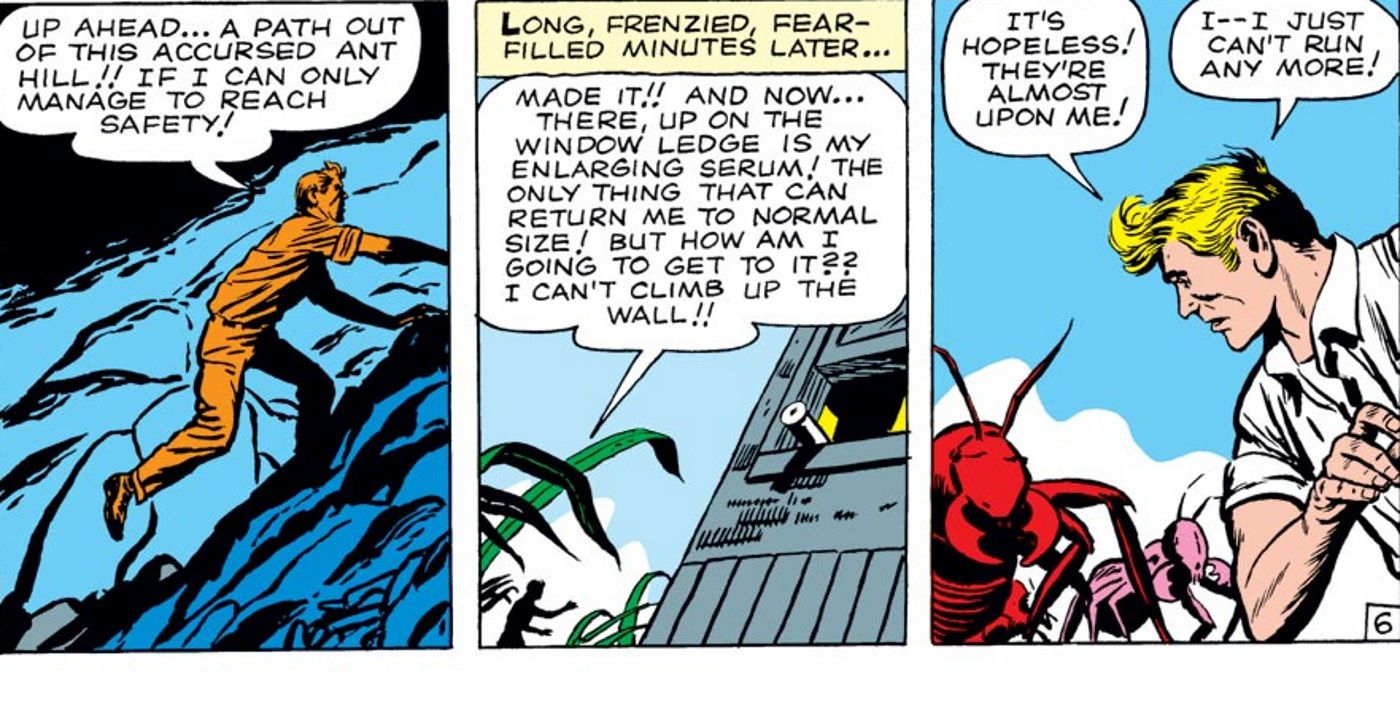In the original MCU Ant-Man movie, both Hank Pym (Michael Douglas)and his successor Scott Lang (Paul Rudd) have a friendly relationship with their ant allies. Scott even takes to giving several of his ants names like "Antony" and "Antonio Banderas." While their rapport with ants is also true to an extent in the comics, some readers will be shocked and disturbed to learn that when he first appeared on the scene, Ant-Man wasn't very nice to ants. In fact, he downright abused them.
This was partly because, when he was first introduced, Hank Pym wasn't supposed to be a Marvel superhero. Indeed, unlike the MCU Ant-Man, he didn't need to wear a special suit to shrink - and didn't have any type of superhero costume to speak of!
Hank Pym originally appeared in Tales to Astonish #27, in a 1962 short story by Stan Lee, Larry Lieber, and Jack Kirby. At the time, the Marvel Universe was still in its infancy and most of the big names like Spider-Man hadn’t debuted yet. As a result, Marvel Comics was still publishing many science fiction and horror comics that had nothing to do with superheroes.
Thus, when Hank Pym was introduced, his story had more in common with the 1957 science fiction movie called The Incredible Shrinking Man instead of a superhero origin story. Introduced as a scientist working on a way to shrink (and grow) objects and people to make transportation easier and more economical, Dr. Henry Pym develops two miraculous serums – one that makes objects shrink and another that makes them grow back to normal size.
Seeking to test out his discovery on a living subject, Pym naturally pours some of his serum onto his arm (not even bothering to inject it or even measure how much he splashes on himself). The serum works perfectly and shrinks Henry Pym to a diminutive size within seconds. Oddly enough, while Pym just splashed the serum onto his hand, his clothes shrink with him too. However, Henry soon realizes that he stupidly left the growth serum on a window ledge for some reason and that he’s too small to get to it.
However, Pym did leave the door to his top-secret laboratory open, so he just races outside for some reason – and is immediately spotted by a colony of red ants. Fearing for his safety, Pym comes up with the brilliant idea to… escape from the ants by hiding in their own ant hill. Naturally this ridiculous plan only results in Henry getting hopelessly lost in the ant hill until he falls down an open shaft into a bunch of honey that the ants had gathered for their food (clearly ants and bees have some highly sophisticated trading system that humans are completely unaware of).
Fortunately for Henry, a friendly red ant pulls him out of the honey and saves his life. Henry immediately repays the ant’s generosity by lighting a stray matchstick that he found in the ant hill and starting a fire that burns down the entire structure. Creating a makeshift lasso out of… something, Henry manages to climb out of the ant hill where a (justifiably) angry red ant is blocking his path and ready to beat the stuffing out of Henry for his horrible act of arson. While the ant is stronger than Henry, the scientist suddenly remembers that he knows judo and throws the ant into the burning ant hill (presumably to his death).
Finally reaching his lab, Henry wonders how he can ever get back up to the window ledge where his top-secret enlarging serum sits (precariously balanced on the open window – clearly Pym had no understanding of the word “security”). At that moment, the friendly ant who saved Henry previously finds the scientist and decides to carry him up the side of the wall to the serum – despite the fact that Henry just burned down his house and killed all of his friends and family.
Returning to normal, Henry Pym decides to destroy all of his serums, feeling they’re too dangerous for anyone else to use. While this decision probably came as a relief to any ant survivors of Pym's terrible rampage, eight issues later, Henry Pym reconsiders his decision and reveals he can just re-create the serums any time he wants.
Tales to Astonish #35 would see the "Return of The Ant-Man" – as Pym finally designed his original red and blue Ant-Man costume to become a formal superhero. Somehow, despite knowing next to nothing about ants and having zero respect for their personal rights in his original appearance, he also becomes the world’s foremost authority on ants between issues and designs a helmet that allows him to communicate with ants. Despite his newfound reverence for their abilities, he still acts like a big bully toward them - using his helmet to broadcast powerful signals to make the ants afraid of him and then beating up their strongest member until the entire colony submits itself to him.
Weirdly, although Hank went to the trouble of creating a sophisticated-looking ant-costume, he spent next to no time coming up with a safer way to administer his serums and just splashes a few drops on his costume like cheap cologne when he wants to shrink. He also decides he can get around the city by using a rubber band slingshot to hurl him across town (although he eventually starts riding ants). Hank also discovers he retains his full-sized strength even as Ant-Man, and uses his new powers to take on Communist spies by sending his army of ants after them.
Strangely, despite being the world's greatest authority on ants, Hank seems to have trouble distinguishing between ants and bees, as Ant-Man regularly orders his ants to clog up guns with... honey. Shockingly, the ants actually manage to make honey (probably because they were terrified of what their abusive overlord would do to them if they didn't obey his commands to the letter).
Comics were written with a light touch in the Silver Age, with greater emphasis on action and not a lot on logic. Henry Pym was also intended to be a one-shot protagonist who was only repurposed into a superhero when comics like The Fantastic Four and The Incredible Hulk took off. Later comics would let Ant-Man showcase (somewhat) greater common sense than he did in his original appearance – hopefully making him a more likeable character. Frankly, readers were probably hoping the ants would kill him by the end of his origin story.




